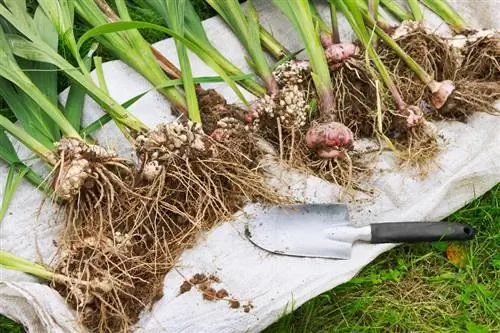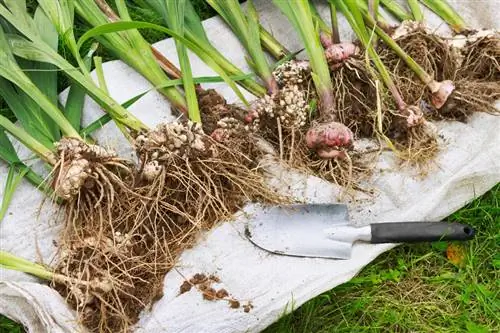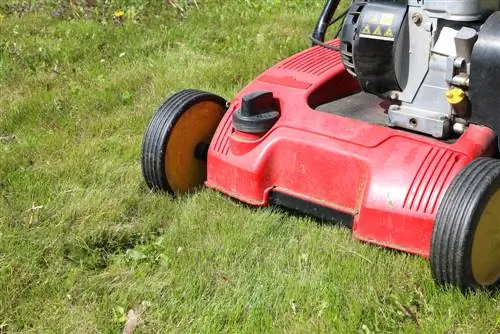- Author admin [email protected].
- Public 2023-12-16 16:46.
- Last modified 2025-01-23 11:20.
Gladiolus are heat-loving flowering plants and are usually not frost hardy. That's why the bulbs have to be dug up in autumn and overwintered indoors. We have summarized for you how to proceed in this article.

When should you dig up gladioli?
Gladiolus should be dug up in the fall after the foliage has yellowed and turned brown. The leaves are cut to a length of about ten centimeters before the bulbs are carefully lifted with a digging fork and collected. Make sure to collect small sprouting bulbs and then dry the bulbs.
When will the onions be dug up?
After the gladiolus has bloomed, the flower stalk is first cut off. Be sure to leave the leaves as the onion plant needs them to store nutrients and trace elements in the tuber. Towards autumn the foliage yellows and turns brown. Now is the right time to cut the leaves to about ten centimeters long and dig up the bulbs.
Don’t dig up too early
Even if the gladioli are not very attractive with the browning foliage, you should not make the mistake of digging up the bulbs too early. Only the shorter days and the cooler temperatures stimulate the gladiolus bulb to grow vigorously. The longer the tubers stay in the ground, the more energy they can store for the next year and sprout again more beautifully.
Dig up tubers
Be careful when digging up the bulbs to avoid damaging them. Proceed as follows:
- Prick the digging fork into the soil between the gladioli and lift them slightly.
- Collect gladiolus bulbs from the loose soil.
- Watch out for small breeding tubers and pick them out too.
- Check onions for pest infestation or injuries.
The gladiolus bulbs form many small bulbs that you can separate from the mother plant immediately after digging and use for propagation.
Drying onions
Before final storage, the onions must dry in an airy room. To do this, first roughly remove the soil and spread the gladioli loosely on newspaper. As soon as the remaining soil remains have completely dried, they are removed and the gladioli can be stored and overwintered.
Tip
You can transplant the dug up bulbs directly into flower pots. Gladioli take two to three years to bloom. During this time you can take good care of your own offspring in the pot and plant them out together with the mother onions in the third or fourth year.






